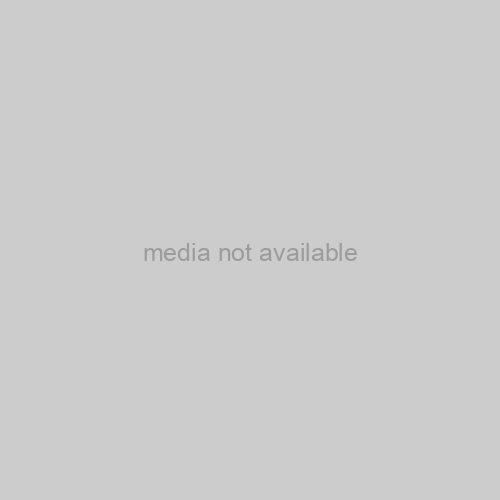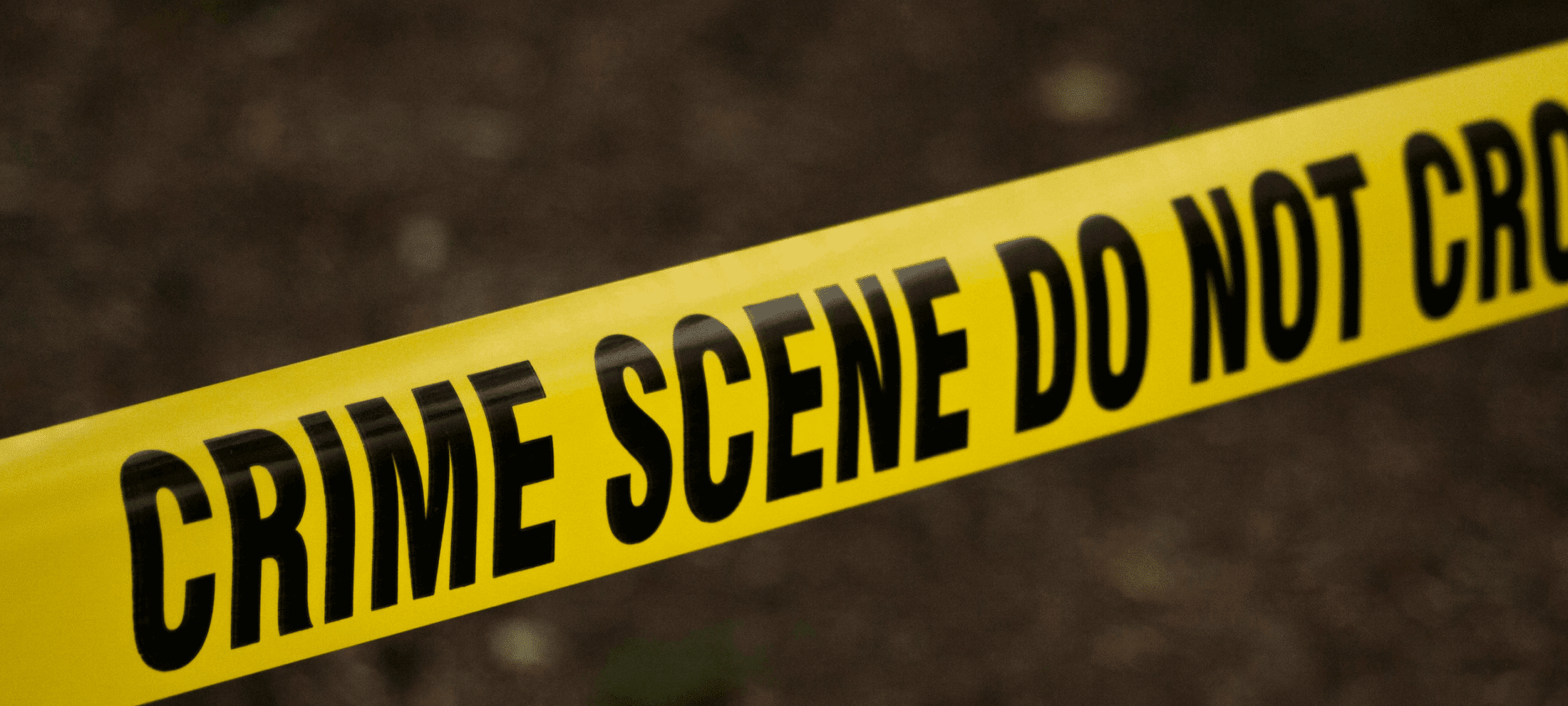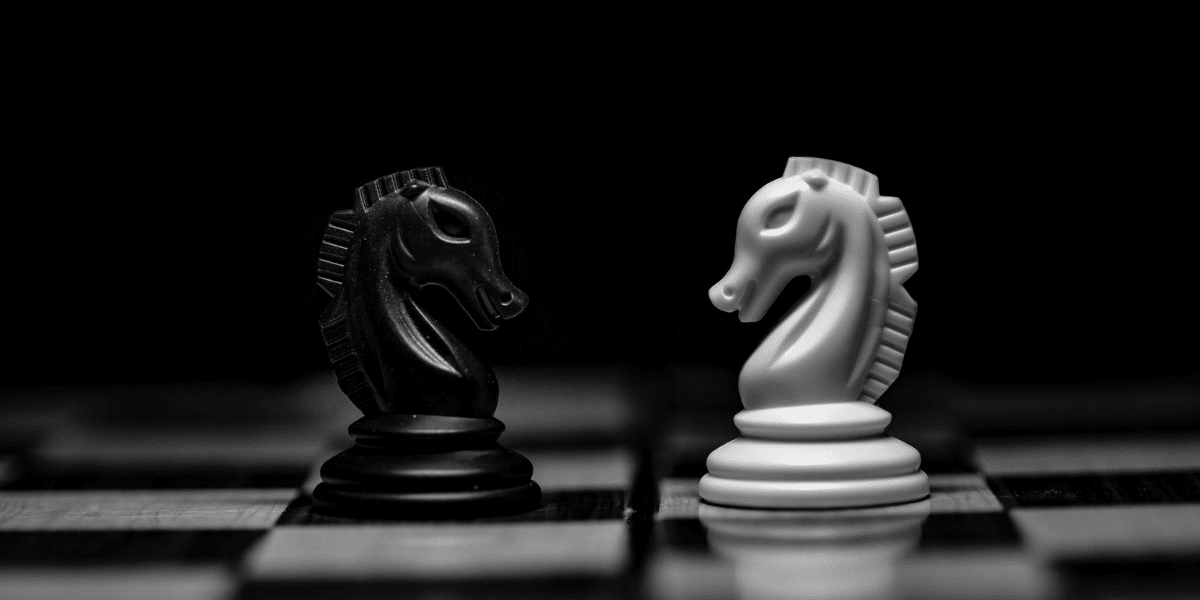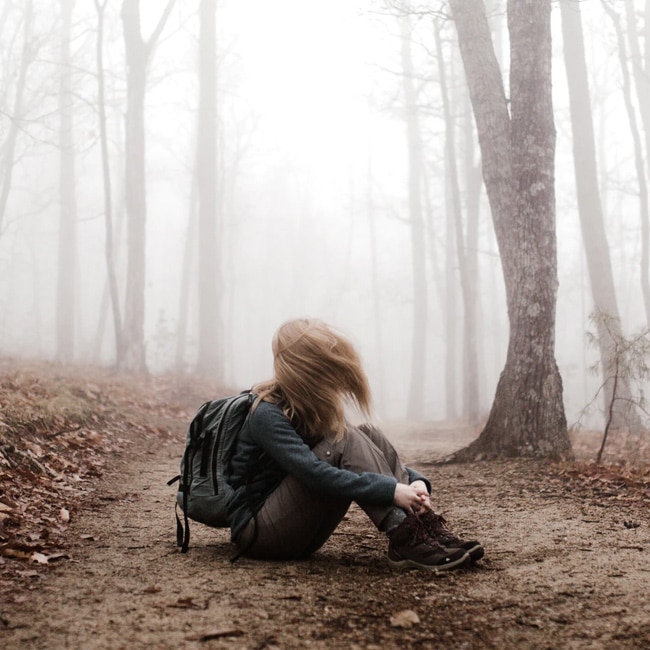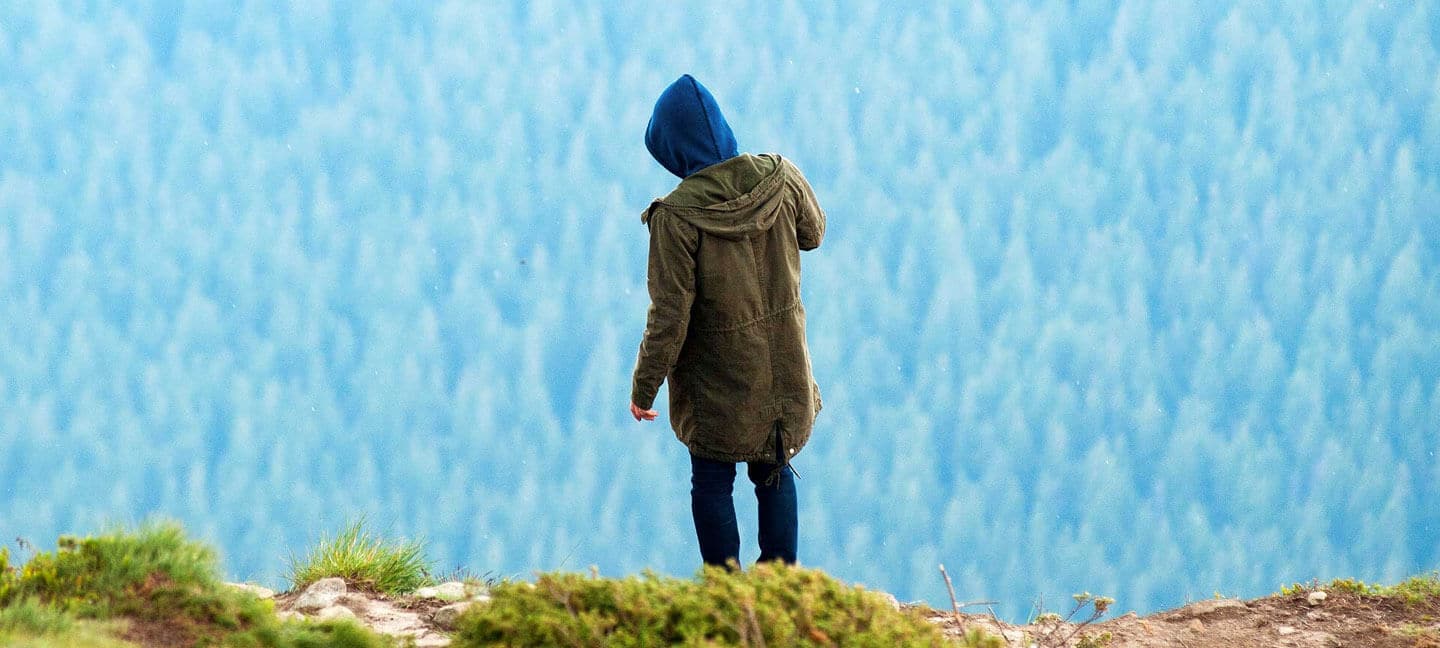Big Thinker: Dennis Altman

Big Thinker: Dennis Altman
Big thinkerPolitics + Human RightsRelationships
BY Kym Middleton The Ethics Centre 28 SEP 2017
Dennis Altman (1943—present) is an internationally renowned queer theorist, Australian professor of politics and current Professorial Fellow at La Trobe University.
Beginning his intellectual career in the 1970s, his impact on queer thinking and gay liberation can be likened to Germaine Greer’s contributions to the women’s movement.
Much of Altman’s work explores the differences between gay radical activists who question heteronormative social structures like marriage and nuclear family, and gay equality activists who want the same access to such structures.
“Young queers today are caught up in the same dilemma that confronted the founders of the gay and lesbian movements: Do we want to demonstrate that we are just like everyone else, or do we want to build alternatives to the dominant sexual and emotional patterns?”
Divided in diversity, united in oppression
Altman’s influential contribution to gay rights began with his first of many books, Homosexual: Oppression and Liberation. The 1971 text has been published in several countries and is still widely read today. It is often regarded as an uncannily correct prediction of how gay rights would improve over the decades – something that would have been difficult to imagine when the first Sydney Mardi Gras was met with police violence.
Altman predicted homosexuality would become normalised and accepted over time. As oppressions ceased, and liberation was realised, sexual identities would become less important and the divisions between homosexual and heterosexual would erode. Eventually, openly gay people would come to be defined the way straight people were – by characteristics other than their sexuality like their job, achievements or interests.
Despite gay communities being home to diversity and division, the shared experience of discrimination bonded them, Altman argued. Much like women’s and black civil rights advocates could testify, oppression has an upside – it forms communities.
End of the homosexual?
Altman’s 2013 book The End of the Homosexual? follows on from the ideas in his first. It is often described as a sequel despite the 40 years and several other publications between the two. He wrote it at a time when same sex marriage was beginning to be legalised around the world.
Altman recently reflected on his old work and said he was wrong to believe identity would become less important as acceptance grew but right to predict being gay would not be people’s defining characteristic.
He has come across as both happy and disappointed by the normalisation of same sex relationships. While massive reductions in violence and systemic discrimination is something you can only celebrate, Altman almost mourns the loss of the radical roots of gay liberation that formed in response to such injustices.
Without the oppressions of yesteryear, what binds diverse people into gay communities today? What distinguishes between a ‘gay lifestyle’ and a ‘straight lifestyle’ when they share so many characteristics like marriage, children, and general social acceptance?
Of course, all things are still not equal today. While people in the West largely enjoy safety and equality, people in countries like Russia are experiencing regressions. Altman hopes gay liberationists could have impact there.
Same sex marriage
Although he’s considered a pioneer in queer theory, a field that questions dominant heterosexual social structures, Altman does not support same sex marriage.
Some people might feel a sense of betrayal that such a well respected gay public intellectual has not put his influence behind this campaign. But Altman’s lack of support is completely consistent with the thinking he has been sharing for decades. Like a radical women’s liberationist, he has reservations about marriage itself – whether it’s same sex or opposite sex.
Altman takes issue with traditional marriage’s “assumption that there is only one way of living a life”. He has long been concerned the positioning of wedlock as the norm forgets all the people who are not living in long term, monogamous relationships. He argues marriage isn’t even all that normal in Australia anymore with single person households growing faster than any other category.
Altman was with his spouse for 20 years until death parted them. While that may sound like a marriage, the role of state and Church deeply bothers him, and so they were together without the blessings of those institutions. He has expressed confusion over the popular desire to be approved by the state or religious bodies that do not want to sanction same sex relationships. It’s because he doesn’t consider same sex marriage a human rights issue, when compared to things like starvation, oppression, and other forms of suffering.
Nevertheless, Altman recognises the importance of equal rights and understands why marriage for heterosexuals and not homosexuals is unfair. True to form he continues to question the institution itself by flipping the marriage equality argument on its head. He advocates for “the equal right not to marry”.
Ethics in your inbox.
Get the latest inspiration, intelligence, events & more.
By signing up you agree to our privacy policy
You might be interested in…
Opinion + Analysis
Relationships, Society + Culture
How can you love someone you don’t know? ‘Swarm’ and the price of obsession
Opinion + Analysis
Health + Wellbeing, Politics + Human Rights
‘Eye in the Sky’ and drone warfare
Opinion + Analysis
Society + Culture, Politics + Human Rights
What happens when the progressive idea of cultural ‘safety’ turns on itself?
Opinion + Analysis
Relationships
Want men to stop hitting women? Stop talking about “real men”
BY Kym Middleton
Former Head of Editorial & Events at TEC, Kym Middleton is a freelance writer, artistic producer, and multi award winning journalist with a background in long form TV, breaking news and digital documentary. Twitter @kymmidd
BY The Ethics Centre
The Ethics Centre is a not-for-profit organisation developing innovative programs, services and experiences, designed to bring ethics to the centre of professional and personal life.
Assisted dying: 5 things to think about

Assisted dying: 5 things to think about
Opinion + AnalysisPolitics + Human RightsRelationships
BY The Ethics Centre 24 AUG 2017
Making sense of our lives means thinking about death. Some philosophers, like Martin Heidegger and Albert Camus, thought death was a crucial, defining aspect of our humanity.
Camus went so far as to say considering whether to kill oneself was the only real philosophical question.
What these philosophers understood was that the philosophical dream of living a meaningful life includes the question of what a meaningful death looks like, too. More deeply, they encourage us to see that life and death aren’t opposed to one another: dying is a part of life. After all, we’re still alive when we’re dying so how we die impacts how we live.
The Ethics Centre was invited to make a submission to the NSW Parliamentary Group on Assisted Dying regarding a draft bill the parliament will debate soon. The questions we raised were in the spirit of connecting the good life to a good death.
Simon Longstaff, director of the Centre and author of the submission, writes, “It is not the role of The Ethics Centre to prescribe how people ought to decide and act. Our task is a more modest one – to set out some of the ethical considerations a person might wish to take into account when forming a view.”
Here are some of the key issues we explored, which are relevant to any discussion of assisted dying, not just the NSW Bill.
Does a good life involve suffering?
The most common justification for assisted dying or euthanasia is to alleviate unbearable suffering. This is based in a fairly universal sentiment. Longstaff writes, “To our knowledge, there is no religion, philosophical tradition or culture that prizes suffering … as an intrinsic good”.
Good things can come as a result of suffering. For example, you might develop perseverance or be supported by family. But the suffering itself is still bad. This, Longstaff argues, means “suffering is generally an evil to be avoided”.
There are two things to keep in mind here.
First, not all pain is suffering. Suffering is a product of the way we interpret ourselves and the world around us. Whether pain causes suffering depends on our response: It’s a subjective experience. Nobody but the sufferer can really determine the extent of their suffering. Recognising this could suggest a patient’s self-determination is crucial to decisions around assisted dying.
Second, just because suffering is generally a bad thing doesn’t mean that anything aiming to avoid it is good. We can agree that the goal of reducing suffering is probably good but still need to interrogate whether the method we’ve chosen to reduce suffering is itself ethical.
The connection between a good death and a good life
There’s not always a solution to suffering, no matter what anecdote you try, whether it be medicine, psychology, religion or philosophy. Sometimes suffering stays a while.
When there is no avenue to alleviate someone’s pain and anguish, Longstaff suggests “life can be experienced … as nothing more than an unrelenting and extra-ordinary burden”.
This is the context in which we should consider whether to help someone to end their lives or not. Although many faiths and beliefs affirm the importance and sacredness of life, if we’re thinking about a good, meaningful life, we need to pay some attention to whether life is actually of any value to the person living it. As Longstaff writes, “To say that life has value regardless of the conditions of a person’s existence may justify the continuation or glorification of lives that could be best described as a ‘living hell’”.
He continues, “To cause such a state would be indefensible. To allow it to persist without available relief is to act without mercy or compassion. To set aside those virtues is to deny what is best in our form of being.”
A responsible person should have autonomy over their death
Most people think it’s important for adults to be held responsible for their actions. Philosophers think this is a product of autonomy – the ability for people to determine the course of their own actions and lives.
Some philosophers think autonomy has an intrinsic connection to dignity. What makes humans special is their ability to make free choices and decisions. What’s more, we usually think it’s wrong to do things that undermine the free, autonomous choices of another person.
If we see death as a part of life, not distinct from it, it seems like we should allow – even expect – people to be responsible for their deaths. As Longstaff writes, “since dying is a part of life, the choices people make about the manner of their dying are central considerations in taking full responsibility for their lives”.
The role of the terminal disease
Some proposed laws, like the draft NSW Bill, suggest a person can seek to end their own life when their terminal disease causes them unbearable suffering. So, if you’re dying of lung cancer, you can only end your life if the cancer itself is causing you unbearable pain. It is necessary to consider if assisted dying be restricted in this way.
Imagine you’ve got a month to live and the only thing that gives you meaning is your ability to go outside and watch the sunrise. One day, you break your leg and are bedridden. Should you now be forced to live for a month in a state you find agonising and meaningless because your broken leg isn’t what’s killing you?
Longstaff argues, “If severe pain and suffering are essential criteria for being eligible for assistance, then on the basis that like cases should be treated in a like manner, assistance should be offered to a person who meets all the other specified criteria – even if their pain and suffering is not caused by their illness”.
Who is eligible for assisted dying?
Many laws try to carve out special categories of people who are and aren’t eligible to request assisted dying. They might do so on the basis of life expectancy, whether the illness is terminal or the age of the patient.
In determining who should be eligible, two principles are worth thinking about.
First, the principle of just access to medical care. Most bioethicists agree before we can figure out who receives medical treatment, we need to have a broader idea of what justice looks like.
Some think justice means people get what they need. For these people, granting medical care is based on how urgently it’s required. Others think justice means getting the best outcome. These people think we should distribute medicine in a way that creates the most quality of life for patients.
Depending on how we view justice, we’ll have different views on who is eligible for assisted dying. Is it those whose quality of life is lowest? If so, it might not be terminal cases in need of treatment. Is it those who are most in need of treatment? This might include young children who many people are reluctant to provide assisted dying to. Until we’re clear on this principle, it’ll be hard to decide who is eligible and who is not.
The second principle worth thinking about is to treat like cases alike. This idea comes from the legal philosopher HLA Hart. He thought it was essential for ethical and legal distinctions to be made on the basis of good reasons, not arbitrary measures. A good example is if two people committed the same crime, they should receive the same penalty. The only reason for not treating them the same is if there is relevant difference in the two cases.
This is important to think about in terms of strict eligibility criteria. Let’s say we reserve assisted dying for people over 25 years old, which the NSW draft Bill does. Hart would encourage us to wonder, as Longstaff noted in The Ethics Centre’s submission, “what ethically significant difference lies between a 24-year-old with six months to live and who wishes to receive assisted dying and a 25-year-old in the same condition?”
Ethics in your inbox.
Get the latest inspiration, intelligence, events & more.
By signing up you agree to our privacy policy
You might be interested in…
Opinion + Analysis
Politics + Human Rights, Relationships, Science + Technology
Parent planning – we shouldn’t be allowed to choose our children’s sex
Opinion + Analysis
Politics + Human Rights
Farhad Jabar was a child – his death was an awful necessity
Opinion + Analysis
Health + Wellbeing, Relationships
Eight questions to consider about schooling and COVID-19
Opinion + Analysis
Business + Leadership, Politics + Human Rights
No justice, no peace in healing Trump’s America
BY The Ethics Centre
The Ethics Centre is a not-for-profit organisation developing innovative programs, services and experiences, designed to bring ethics to the centre of professional and personal life.
Ethics Explainer: The Panopticon
The panopticon is a disciplinary concept brought to life in the form of a central observation tower placed within a circle of prison cells.
From the tower, a guard can see every cell and inmate but the inmates can’t see into the tower. Prisoners will never know whether or not they are being watched.
This was introduced by English philosopher Jeremy Bentham. It was a manifestation of his belief that power should be visible and unverifiable. Through this seemingly constant surveillance, Bentham believed all groups of society could be altered. Morals would be reformed, health preserved, industry invigorated, and so on – they were all subject to observation.
Think of the last time you were at work and your boss walked in the room. Did you straighten up and work harder in their presence? Now imagine they were always in the room. They wouldn’t be watching you all the time, but you’d know they were there. This is the power of constant surveillance – and the power of the panopticon.
Foucault on the panopticon
French philosopher, Michel Foucault, was an outspoken critic of the panopticon. He argued the panopticon’s ultimate goal is to induce in the inmates a state of conscious visibility. This assures the automatic functioning of power. To him, this form of incarceration is a “cruel, ingenious cage”.
Foucault also compares this disciplinary observation to a medieval village under quarantine. In order to stamp out the plague, officials must strictly separate everyone and patrol the streets to ensure villagers don’t leave their homes and become sick. If villagers are caught outside, the punishment is death.
In Foucault’s village, constant surveillance – or the idea of constant surveillance – creates regulation in even the smallest details of everyday life. Foucault calls this a “discipline blockade”. Similar to a dungeon where each inmate is sequestered, administered discipline can be absolute in matters of life or death.
On the other hand, Bentham highlights the panopticon’s power as being a “new mode of obtaining mind over mind”. By discarding this isolation within a blockade, the discipline becomes a self-propagating mental mechanism through visibility.
The panopticon today: data
Today, we are more likely to identify the panopticon effect in new technologies than in prison towers. Philosopher and psychologist Shoshanna Zuboff highlights what she calls “surveillance capitalism”. While Foucault argued the “ingenious” panoptic method of surveillance can be used for disciplinary methods, Zuboff suggests it can also be used for marketing.
Concerns over this sort of monitoring date back to the beginning of the rise of personal computers in the late 80s. Zuboff outlined the PC’s role as an “information panopticon” which can monitor the amount of work being completed by an individual.
Today this seems more applicable. Employers can get programs to covertly track keystrokes of staff working from home to make sure they really are putting in their hours. Parents can get software to monitor their children’s mobile phone use. Governments around the world are passing laws so they can collect internet data on people suspected of planning terror attacks. Even public transport cards can be used to monitor physical movements of citizens.
This sort of monitoring and data collection is particularly analogous with the panopticon because it’s a one-way information avenue. When you’re sitting in front of your computer, browsing the web, scrolling down your newsfeed and watching videos, information is being compiled and sent off to your ISP.
In this scenario, the computer is Bentham’s panopticon tower, and you are the subject from which information is being extracted. On the other end of the line, nothing is being communicated, no information divulged. Your online behaviour and actions can always be seen but you never see the observer.
The European Union has responded to this with a new regulation, known as “the right to an explanation”. It states users are entitled to ask for an explanation about how algorithms make decisions. This way, they can challenge the decision made or make an informed choice to opt out.
In these new ways, Bentham’s panopticon continues to operate and influence our society. Lack of transparency and one-way communication is often disconcerting, especially when thought about through a lens of control.
Then again, you might also argue to ensure a society functions, it’s useful to monitor and influence people to do what is deemed good and right.
Ethics in your inbox.
Get the latest inspiration, intelligence, events & more.
By signing up you agree to our privacy policy
You might be interested in…
Opinion + Analysis
Politics + Human Rights
Settler rage and our inherited national guilt
Opinion + Analysis
Health + Wellbeing, Politics + Human Rights
Disease in a Time of Uncertainty
Opinion + Analysis
Politics + Human Rights
The erosion of public trust
Explainer
Business + Leadership, Politics + Human Rights, Relationships
Ethics Explainer: Power
BY The Ethics Centre
The Ethics Centre is a not-for-profit organisation developing innovative programs, services and experiences, designed to bring ethics to the centre of professional and personal life.
Big Thinker: Michel Foucault
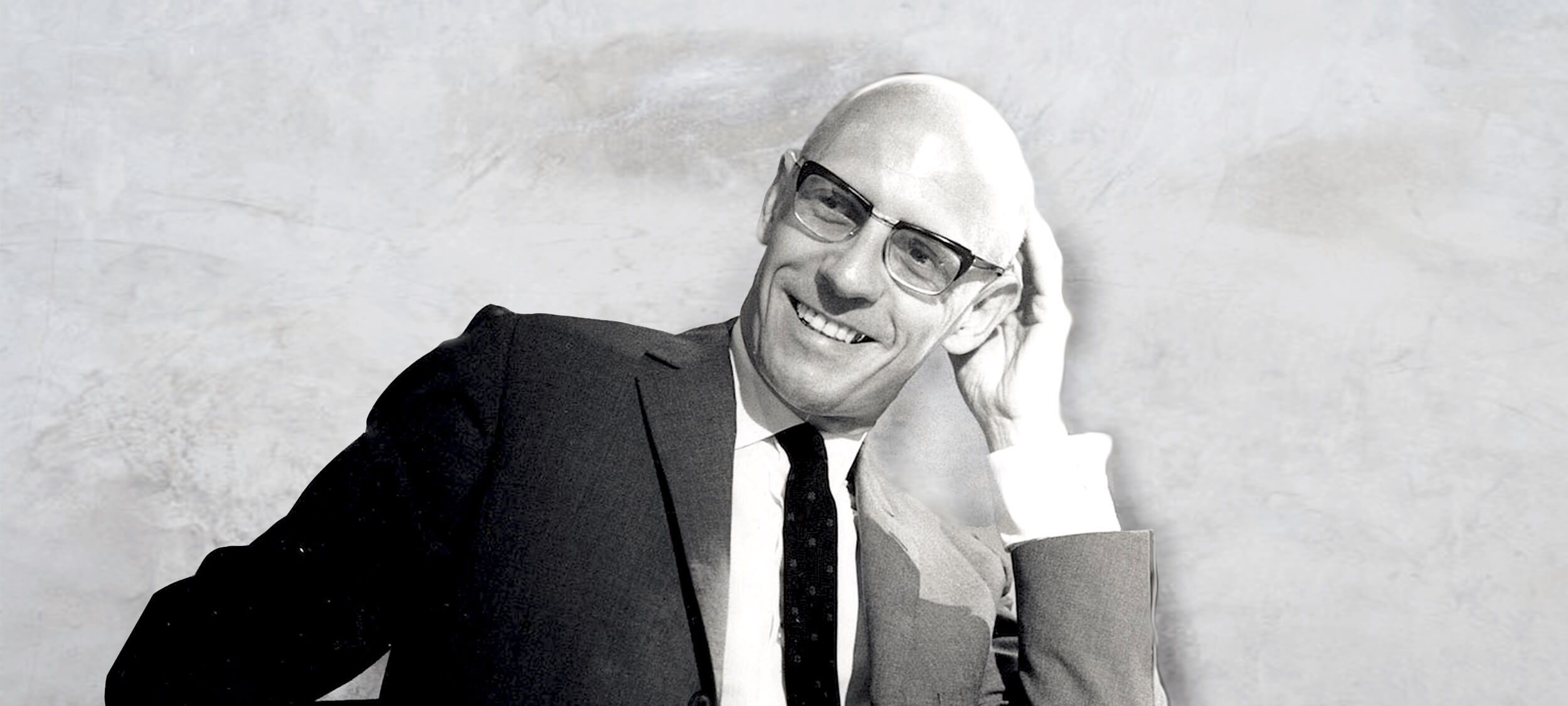
Big Thinker: Michel Foucault
Big thinkerPolitics + Human RightsRelationships
BY The Ethics Centre 13 JUL 2017
Michel Foucault (1926—1984) was a French philosopher, historian and psychologist whose work explored the underlying power relationships in a range of our modern institutions.
Given Foucault’s focus on the ways institutions wield power over us, and that trust in institutions is catastrophically low around the world today, it’s worth having a look at some of the radical Frenchman’s key ideas.
History has no rhyme or reason
At the centre of Foucault’s ideas is the concept of genealogy – the word people usually use when they’re tracing their family history. Foucault thought all of history emerged in the same way a family does – with no sense of reason or purpose.
Just like your existence was the result of a bunch of random people meeting and procreating over generations, he thought our big ideas and social movements were the product of luck and circumstance. He argued what we do is both a product of the popular ways of thinking at the time (which he called rationalities) and the ways in which people talked about those ideas (which he called discourses).
Today Foucault might suggest the dominant rationalities were those of capitalism and technology. And the discourse we use to talk about them might be economics because we think about and debate things in terms their usefulness, efficiency and labour saving. Our judgements about what’s best are filtered through these concepts, which didn’t emerge because of any conscious historical design, but as random accidents.
You might not agree with Foucault. There are people who believe in moral progress and the notion our world is improving as time goes on. However, Foucault’s work still highlights the powerful sense in which certain ideas can become the flavour of the month and dominate the way we interpret the world around us.
For example, if capitalism is a dominant rationality, encouraging us to think of people as economic units of production rather than people in their own right, how might that impact the things we talk about? If Foucault is right, our conversations would probably centre on how to make life more efficient and how to manage the demands of labour with the other aspects of our life. When you consider the amount of time people spend looking for ‘life hacks’ and the ongoing discussion around work/life balance, it seems like he might have been on to something.
But Foucault goes further. It’s not just the things we talk about or the ways we talk about them. It’s the solutions we come up with. They will always reflect the dominant rationality of the time. Unless we’ve done the radical work of dismantling the old systems and changing our thinking, we’ll just get the same results in a different form.
Care is a kind of control
Although many of Foucault’s arguments were new to the philosophical world when he wrote them, they were also reactionary. His work on power was largely a response to the tendency for political philosophers to see power only as the relationship between the sovereign and the citizen – or state and individual. When you read the works of social contract theorists like Thomas Hobbes and Jean Jacques Rousseau, you get the sense politics consists only of people and the government.
Foucault challenged all this. He acknowledged lots of power can be traced back to the sovereign, but not all of it can.
For example, the rise of care experts in different fields like medicine, psychology and criminology creates a different source of power. Here, power doesn’t rest in an ability to control people through violence. It’s in their ability to take a person and examine them. In doing so, the person is objectified and turned into a case (we still read cases in psychiatric and medical journals now). This puts the patients under the power of experts who are masters of the popular medical and social discourses at the time.
What’s more, the expert collects information about the patient’s case. A psychiatrist might know what motivates a person’s behaviour, what their darkest sexual desires are, which medications they are taking and who they spend their personal time with. All of this information is collected in the interests of care but can easily become a tool for control.
A good example of the way non-state groups can be caring in a way that creates great power is in the debate around same sex marriage. Decades ago, LGBTI people were treated as cases because their sexual desires were medicalised and criminalised. This is less common now but experts still debate whether children suffer from being raised by same sex parents. Here, Foucault would likely see power being exercised under the guise of care – political liberties, sexuality and choice in marital spouse are controlled and limited as a way of giving children the best opportunities.
Prison power in inmate self-regulation
Foucault thought prisons were a really good example of the role of care in exercising power and how discourses can shape people’s thinking. They also reveal some other unique things about the nature of power in general and prisons more specifically.
In Discipline and Punish: The Birth of the Prison, Foucault observed a monumental shift in how society dealt with crime. Over a few decades, punishments went from being public, violent spectacles like beheadings, hangings and mutilations to private, clinical and sterile exercises with the prison at the centre of it all. For Foucault, the move represented a shift in discourse. Capital punishment and torture were out, discipline and self-regulation were in.
He saw the new prison, where the inmates are tightly managed and regulated by timetables – meal time, leisure time, work time, lights out time – as being a different form of control. People weren’t in fear of being butchered in the town square anymore. The prison aimed to control behaviour through constant observation. Prisoners who were always watched, regulated their own behaviour.
This model of the prison is best reflected in Jeremy Bentham’s concept of the panopticon. The panopticon was a prison where every cell is visible from a central tower occupied by an unseen guard. The cells are divided by walls so the prisoners can’t engage with each other but they are totally visible from the tower at all times. Bentham thought – and Foucault agreed – that even though the prisoners wouldn’t know if they were being watched at any moment, knowing they could be seen would be enough to control their behaviour. Prisoners were always visible while guards were always unseen.
Foucault believed the panopticon could be recreated as a factory, school, hospital or society. Knowing we’re being watched motivates us to conform our behaviours to what is expected. We don’t want to be caught, judged or punished. The more frequently we are observed, the more likely we are to regulate ourselves. The system intensifies as time goes on.
Exactly what ‘normality’ means will vary depending on the dominant discourse of the time but it will always endeavour to reform prisoners so they are useful to society and to the powerful. That’s why, Foucault argued, prisoners are often forced to do labour. It’s a way of taking something society sees as useless and making it useful.
Even when they’re motivated by care – for example, by the belief that work is good for prisoners and helps them reform – the prison system serves the interests of the powerful in Foucault’s eyes. It will always reflect their needs and play a role in enforcing their vision of how society should be.
You needn’t accept all of Foucault’s views on prisons to see a few useful points in his argument. First, prisons haven’t been around forever. There are other ways of dealing with crime we could use but choose not to. Why do we think prisons are the best? What are the beliefs driving that judgement?
Ethics in your inbox.
Get the latest inspiration, intelligence, events & more.
By signing up you agree to our privacy policy
You might be interested in…
Opinion + Analysis
Climate + Environment, Politics + Human Rights, Relationships
This is what comes after climate grief
WATCH
Relationships
Virtue ethics
Explainer
Relationships
Ethics Explainer: Scepticism
Opinion + Analysis
Health + Wellbeing, Relationships, Science + Technology
Philosophically thinking through COVID-19
BY The Ethics Centre
The Ethics Centre is a not-for-profit organisation developing innovative programs, services and experiences, designed to bring ethics to the centre of professional and personal life.
James C. Hathaway on the refugee convention
James C. Hathaway on the refugee convention
WATCHPolitics + Human Rights
BY James C. Hathaway The Ethics Centre 22 JUN 2017
To mark the 2017 anniversary of the UN’s World Refugee Day and Australia’s Refugee Week, we spoke to Professor James Hathaway, the world’s leading expert on refugee law.
Watch this video for his in-depth analysis of the Refugee Convention, an agreement made in 1951 in response to World War II. Is it still relevant? What needs to change? He doesn’t hold back!
James’ work is used by courts all over the world when interpreting the Refugee Convention and applying it to decisions. His many publications include the seminal book co-authored with Australia’s Michelle Foster, The Law of Refugee Status.
Follow James Hathaway on Twitter here: @JC_Hathaway
Ethics in your inbox.
Get the latest inspiration, intelligence, events & more.
By signing up you agree to our privacy policy
You might be interested in…
Opinion + Analysis
Politics + Human Rights
Billionaires and the politics of envy
Explainer
Politics + Human Rights
Ethics Explainer: The Panopticon
Opinion + Analysis
Politics + Human Rights
(Roe)ing backwards: A seismic shift in women’s rights
Opinion + Analysis
Politics + Human Rights, Relationships
Would you kill baby Hitler?
BY James C. Hathaway
James Hathaway is an American-Canadian scholar of international refugee law and related aspects of human rights and public international law. His work is regularly cited by the most senior courts of the common law world, and has played a pivotal role in the evolution of refugee studies scholarship.
BY The Ethics Centre
The Ethics Centre is a not-for-profit organisation developing innovative programs, services and experiences, designed to bring ethics to the centre of professional and personal life.
Ethics Explainer: Rights and Responsibilities

Ethics Explainer: Rights and Responsibilities
ExplainerPolitics + Human Rights
BY The Ethics Centre 2 JUN 2017
When you have a right either to do or not do something, it means you are entitled to do it or not.
Rights are always about relationships. If you were the only person in existence, rights wouldn’t be relevant at all. This is why rights always correspond to responsibilities. My rights will limit the ways you can and can’t behave towards me.
Legal philosopher Wesley Hohfeld distinguished between two sets of rights and responsibilities. First, there are claims and duties. Your right to life is attached to everyone else’s duty not to kill you. You can’t have one without the other.
Second, there are liberties and no-claims. If I’m at liberty to raise my children as I see fit it’s because there’s no duty stopping me – nobody can make a claim to influence my actions here. If we have no claim over other people’s liberties, our only duty is not to interfere with their behaviour.
But your liberty disappears as soon as someone has a claim against you. For example, you’re at liberty to move freely until someone else has a claim to private property. Then you have a duty not to trespass on their land.
It’s useful to add into the mix the distinction between positive and negative rights. If you have a positive right, it creates a duty for someone to give you something – like an education. If you have a negative right, it means others have a duty not to treat you in some way – like assaulting you.
All this might seem like tedious academic stuff but it has real world consequences. If there’s a positive right to free speech, people need to be given opportunities to speak out. For example, they might need access to a radio program so they can be heard.
By contrast, if it’s a negative claim right, nobody can censor anyone else’s speech. And if free speech is a liberty, your right to use it is subject to the claims of other. So if other people claim the right not to be offended, for example, you may not be able to speak up.
There are a few reasons why rights are a useful concept in ethics.
First, they are easy to enforce through legal systems. Once we know what rights and duties people have, we can enshrine them in law.
Second, rights and duties protect what we see as most important when we can’t trust everyone will act well all the time. In our imperfect world, rights provide a strong language to influence people’s behaviour.
Finally, rights capture the central ethical concepts of dignity and respect for persons. As the philosopher Joel Feinberg writes:
Having rights enables us to “stand up like men,” to look others in the eye, and to feel in some fundamental way the equal of anyone. To think of oneself as the holder of rights is not to be unduly but properly proud, to have that minimal self-respect that is necessary to be worthy of the love and esteem of others.
Indeed, respect for persons […] may simply be respect for their rights, so that there cannot be the one without the other; and what is called “human dignity” may simply by the recognizable capacity to assert claims.
Feinberg suggests rights are a manifestation of who we are as human beings. They reflect our dignity, autonomy and our equal ethical value. There are other ways to give voice to these things, but in highly individualistic cultures, what philosophers call “rights talk” resonates for two reasons: individual freedom and equality.
Ethics in your inbox.
Get the latest inspiration, intelligence, events & more.
By signing up you agree to our privacy policy
You might be interested in…
Opinion + Analysis
Politics + Human Rights
Why Anzac Day’s soft power is so important to social cohesion
Opinion + Analysis
Politics + Human Rights, Relationships
Assisted dying: 5 things to think about
Explainer
Society + Culture, Politics + Human Rights
Ethics Explainer: Moral Courage
Opinion + Analysis
Society + Culture, Politics + Human Rights
‘The Zone of Interest’ and the lengths we’ll go to ignore evil
BY The Ethics Centre
The Ethics Centre is a not-for-profit organisation developing innovative programs, services and experiences, designed to bring ethics to the centre of professional and personal life.
Big Thinker: John Rawls

Is there a way to really get our societies to be fair for everyone?
This was the question John Rawls (1921-2002), American political philosopher and author of A Theory of Justice, attempted to answer. His work centres on social justice, privilege, and the distribution of resources in a society.
Rawl’s cake
Imagine it’s your birthday. Your parents decide to throw a party for you and your friends. When it’s time to cut the cake, your mother tells you, “You can cut the cake in whatever way you want to but you can’t choose the slice that you’ll get to have”.
Maybe you’d like a bigger slice of that cake. But since you don’t want to risk getting a small slice, you decide to cut equal sizes for everyone. Now you and your friends are happily munching away, knowing the cake was distributed as fairly as possible.
Fairness demands ignorance
Rawls thought most people’s definition of justice reflected what was good for them instead of anything shared or universal. You might think justice means owning the resources you’ve inherited, or you might think justice is about redistributing them. Whether intentionally or not, we all define justice in a way that gets us a little higher on the ladder. (Big slice for you, small slice for everyone else.)
To get to the core of things, Rawls asks us to imagine a situation where society doesn’t exist yet and no one knows where they will end up in life. What kind of society would you join knowing you could be somehow disadvantaged? If you entered this new world with no parents from childhood, a physical disability, intellectual impairment, financial hardship, or no access to school, what would you want it to be like?
If we each play along with Rawl’s hypothetical, we are likely to imagine fairness in a particular way. Rawls thought we would only join a society where everyone, no matter what circumstances we were born in, has their needs met.
Inequality needs to benefit everybody
Rawls’ conception of justice was based on society’s equal distribution of resources according to two principles.
The first principle is the equality principle. This says everyone should have access to the broadest possible range of civil liberties. Here the only limitation on our freedoms is what is necessary to give other people the same level of freedom. For this system to be fair, you can only be as free as everyone else.
The second principle is the difference principle. Any inequalities in society are only justified under two conditions:
1. There must be equality of opportunity. If there are going to be inequalities – like some people earning more money than others – they should be available to everyone. For example, if access to education increases people’s earning capacity, everyone should have the same access to education so everyone has the same chance to grow their wealth.
2. If there are any social disadvantages, they need to benefit the least advantaged people most. Rawls thought we should only be permitted to grow our personal wealth if we used it to benefit the poor. He wanted to keep the socioeconomically disadvantaged within a reasonable distance of the financially elite by redistributing resources. This was what he saw to be the fairest possible system.
If we were to imagine what the difference principle might look like in practice, it could be policies permitting people to leave inheritance to their children if the state is allowed to tax and distribute it to the poor.
Rawls’ challenge for political philosophy is to question whether a merit based system is as fair as people think. Was it only your work that got you to where you are today or did luck also play a role? If it was the latter, what does that tell us about justice?
Be consistent
Rawls was dedicated to finding the most reasonable political system possible. He believed the first step was to fill our parliaments with reasonable people. It might sound like a no brainer, but by reasonable he meant those with consistency and coherence between their various opinions and beliefs. He called this “reflective equilibrium”.
Imagine someone believes if employees do the same work, they should receive the same wage. Imagine they also opposed striving for pay parity between men and women. Rawls would say this person’s political beliefs are incompatible and therefore unreasonable. To achieve reflective equilibrium, one of these views will have to shift.
In fact, Rawls thought achieving genuine reflective equilibrium was impossible. Instead, we should try to get as near as we can to perfect synergy.
For those of us interested in ethics and politics, the reflective equilibrium is an important idea. We often form opinions based on gut reaction, instinct, or by focussing on the specifics of a situation.
Each of these approaches can at times be unreasonable and inconsistent. By forcing us to test how our different beliefs fit together, Rawls encourages us to do something very basic but very important: make sure our set of beliefs make sense.
First published March 2017. Updated August 2018.
Ethics in your inbox.
Get the latest inspiration, intelligence, events & more.
By signing up you agree to our privacy policy
You might be interested in…
Opinion + Analysis
Politics + Human Rights
Farhad Jabar was a child – his death was an awful necessity
Opinion + Analysis
Politics + Human Rights
Learning risk management from Harambe
Explainer
Politics + Human Rights, Relationships
Ethics Explainer: Critical Race Theory
Opinion + Analysis
Climate + Environment, Politics + Human Rights, Relationships
A burning question about the bushfires
BY The Ethics Centre
The Ethics Centre is a not-for-profit organisation developing innovative programs, services and experiences, designed to bring ethics to the centre of professional and personal life.
Big Thinker: Hannah Arendt
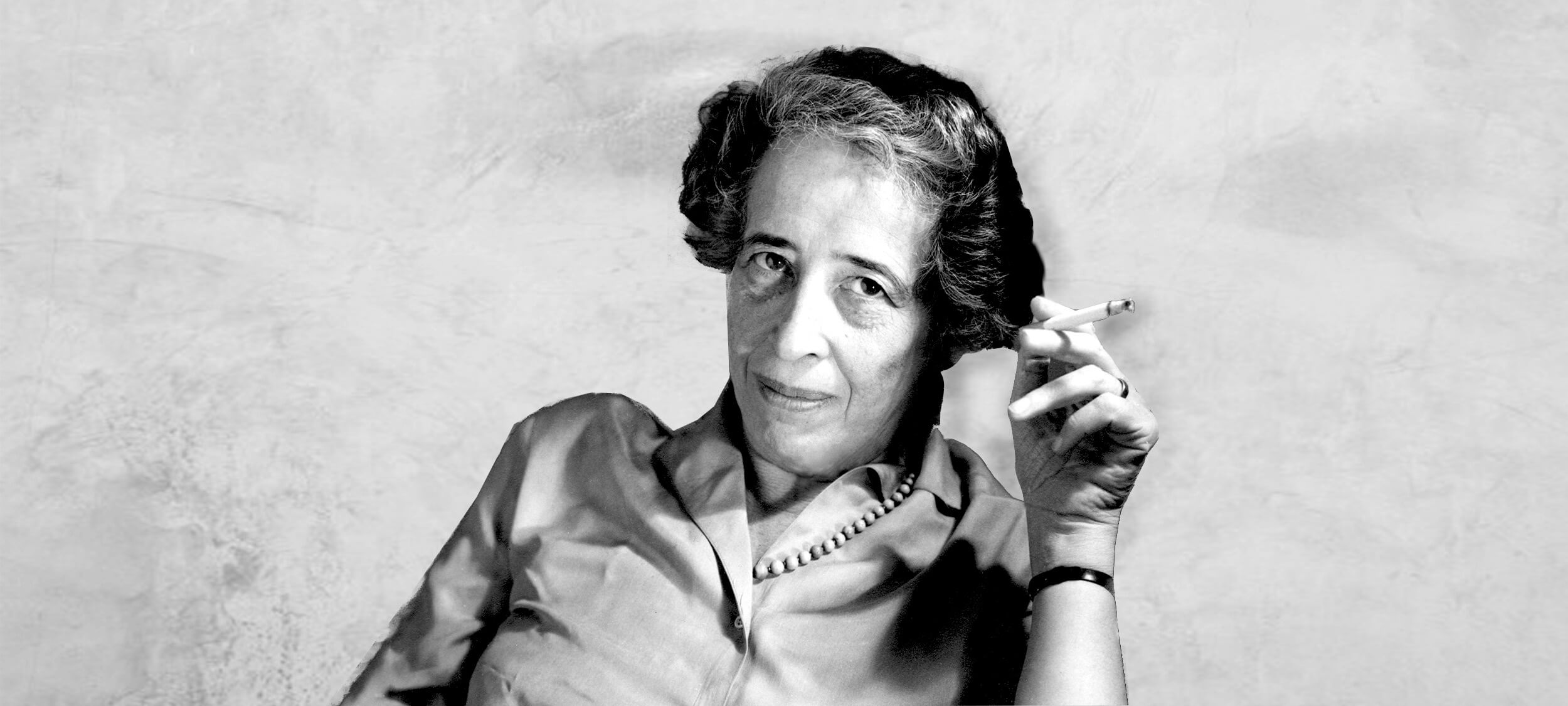
Johannah “Hannah” Arendt (1906 – 1975) was a German Jewish political philosopher who left life under the Nazi regime for nearby European countries before settling in the United States. Informed by the two world wars she lived through, her reflections on totalitarianism, evil, and labour have been influential for decades.
We are still learning from this seminal political theorist. Her book The Origins of Totalitarianism sold out on Amazon in 2017, more than 60 years after it was first published.
Evil doesn’t need malicious intentions
Arendt’s most well known idea is “the banality of evil”. She explored this in 1963 in a piece for The New Yorker that covered the trial of a Nazi bureaucrat who shared the first name of Hitler, Adolf Eichmann. This later became a book called Eichmann in Jerusalem: Reflections on the Banality of Evil.
In Eichmann, Arendt found a man whose greatest crime was a lack of thinking. His role was to transport Jewish people from German occupied areas to concentration camps in Poland. Eichmann did not kill anyone first hand. He was not involved in designing Hitler’s final solution. But he oversaw the trains that took millions of people to their deaths. They were gassed in chambers or died along the way or in camps due to starvation, overwork, illness, cold, heat, or brutality. Eichmann’s only defence for his involvement in this atrocity was obedience to the law and fulfilling his duty.
Eichmann was so steadfast with this line of reasoning he even referenced the philosopher Immanuel Kant and his theory of moral duty. Kant argued morality was acting on your obligations, not your emotions or what will bring you benefit. For Kant, the person who helps the beggar out of empathy or a belief assisting is a pathway to heaven is not doing an act of good. Kant felt everyone is morally obliged to help the beggar, and they are especially virtuous if they act on this duty despite feeling repulsed or no rewarding sense of doing good.
This does not really suit Eichmann’s argument because Kant was emphasising our ability to reason above emotion. This is precisely where Eichmann failed. We can only guess but it seems likely he did his job without asking questions while feeling a sense of comfort in the safety of his salary and senior position during volatile times.
Arendt believed it was this lack of true thinking and questioning that paved the way to genocide. Evil on the scale of Nazism required far more Adolf Eichmanns than Adolf Hitlers.
Totalitarianism needs political apathy
In studying the causes of WWII, Arendt came across “the masses”. She believed totalitarian regimes needed this to succeed.
By “the masses”, she meant the enormous group of people who are politically disconnected from other members of society. They don’t identify with a particular class, religion, or group. Their lack of group membership deprives them of common interests to demand from government. These people have no interest in politics because they don’t have political clout. They are an unorganised cohort with different, often conflicting desires whose needs are easily disregarded by politicians.
But although these people take no active interest in politics they still hold expectations for the state. If politicians fail those expectations they face “the loss of the silent consent and support of the unorganised masses”. In response, they “shed their apathy” and look for an outlet “to voice their new violent opposition”.
The totalitarian leader emerges from this “structureless mass of furious individuals”. With the political apathy of the masses turned to hostility, leaders will rise by breaking established norms and ignoring the way politics is usually done. Arendt dramatically says they prefer “methods which end in death rather than persuasion”. In short, they’re less likely to build politics up than they are to tear it down because that’s what the masses want.
If this all sounds depressing, there is a solution embedded in Arendt’s writing: political engagement. The masses arise when individuals are lonely and politically disconnected. They are defined by a lack of solidarity or responsibility with other citizens.
By revitalising our political community we can recreate what Arendt sees as good politics. This is when people feel a sense of personal and political responsibility for the nation and are able to band together with other citizens who have common interests. When citizens are connected in solidarity with one another, the mass never occurs and totalitarianism is held at bay.
When work defines you, unemployment is a curse
Not all Arendt’s work was concerned with war and totalitarianism. In The Human Condition, she also offers a general critique of modernity. Drawing on Karl Marx, Arendt thought the industrial age transformed humanity from thinkers into “working animals”.
She thought most people had come to define themselves by their work – reducing themselves to economic robots. Although it’s not a central point of Arendt’s analysis, this reduction is a product of the same forces she sees in the banality of evil. It’s a triumph of ‘doing’ over ‘thinking’ and of humans finding easy ways to define themselves.
Arendt wasn’t just concerned because people were reducing themselves to working drones. She also worried the industrial age which had just redefined them was also about to rob them of their new identities. She believed within a few decades, technology would replace factory jobs. Many people’s work would vanish.
“What we are confronted with is the prospect of a society of labourers without labour, that is, without the only activity left to them. Surely, nothing could be worse.”
In a time when automation now threatens over half of jobs on average in OECD countries, Arendt’s predictions seem timely. Can we shift our identity away from work in time to survive the massive job reduction to come?
Published February 2017. Updated August 2018.
Ethics in your inbox.
Get the latest inspiration, intelligence, events & more.
By signing up you agree to our privacy policy
You might be interested in…
Opinion + Analysis
Politics + Human Rights, Relationships
Would you kill baby Hitler?
Opinion + Analysis
Politics + Human Rights, Relationships
Want #MeToo to serve justice? Use it responsibly.
Opinion + Analysis
Politics + Human Rights
The limits of ethical protest on university campuses
Explainer
Society + Culture, Politics + Human Rights
Ethics Explainer: Just Punishment
BY The Ethics Centre
The Ethics Centre is a not-for-profit organisation developing innovative programs, services and experiences, designed to bring ethics to the centre of professional and personal life.
Ethics Explainer: Freedom of Speech

Ethics Explainer: Freedom of Speech
Opinion + AnalysisPolitics + Human Rights
BY The Ethics Centre 22 FEB 2017
Freedom of speech refers to people’s ability to say what they want without punishment.
Most people focus on punishment by the state but social disapproval or protest can also have a chilling effect on free speech. The consequences of some kinds of speech can make people feel less confident in speaking their mind at all.
Since most philosophers agree there is no such thing as absolute free speech, the debate largely focuses on why we should restrict what people say. Many will state, “I believe in free speech except…”. What comes after that? This is where the discussion on what the exceptions and boundaries to free speech are.
Even John Stuart Mill, who is so influential on this topic we need to discuss his ideas at length, thought free speech has limits. You would usually be free to say, “Immigrants are stealing our jobs”. If you say so in front of an angry mob of recently laid off workers who also happen to be outside an immigrant resource centre, you might cause violence. Mill believed you should face consequences for remarks like these.
This belief stems from Mill’s harm principle, which states we should be free to act unless we’re harming someone else. He thought the only speech we should forbid is the kind that causes direct harm to other people.
Mill’s support for free speech is related to his consequentialist views. He thought we should be governed by laws leading to the best long-term outcomes. By allowing people to voice their views, even those we find immoral, society gives itself the best chance of learning what’s “true”.
This happens in two ways. First, the majority who think something is immoral might be wrong. Second, if the majority are right, they’ll be more confident of their position if they’ve successfully argued for it. In either case, free speech will improve society.
If we silence dissenting views, it assumes we already have the right opinion. Mill said “all silencing of discussion is an assumption of infallibility”.
Accepting the limits of our own knowledge means allowing others to speak their mind – even if we don’t like what they’ve got to say.
As Noam Chomsky said, “If you’re in favour of freedom of speech, that means you’re in favour of freedom of speech precisely for views you despise”.
Free speech advocates tend to limit restrictions on speech to ‘direct’ harms like violence or defamation. Others think the harm principle is too narrow in definition. They believe some speech can be emotionally damaging, socially marginalising, and even descend into hate speech. They believe the speech that causes ‘indirect’ harms should also be restricted.
This leads people to claim citizens do not have the right to be offensive or insulting. Others disagree. Some don’t believe offence is socially or psychologically harmful. Furthermore, they suggest we cannot reasonably predict what kinds of speech will cause offence. Whether speech is acceptable or not becomes subjective. Some might find any view offensive if it disagrees with their own, which would see increasing calls for censorship.
In response, a range of theorists suggest offending is harmful and causes injury. They also say it has insidious effects on social cohesion because it places victims in a constant state of vulnerability.
In Australia, Race Commissioner Tim Soutphommasane is a strong proponent of this view. He believes certain kinds of speech “undermine the assurance of security to which every member of a good society is entitled”. Judith Butler goes further. She believes once you’ve been the victim of “injurious speech”, you lose control over your sense of place. You no longer know where you are welcome or when the next abuse will occur.
For these reasons, those who support only narrow limits to free speech are sometimes accused of prioritising speech above other goods like harmony and respect. As Soutphommasane says, “there is a heavy price to freedom that is imposed on victims”.
Whether you think offences count as harms or not will help determine how free you think speech should be. Regardless of where we draw the line, there will still be room for people to say things that are obnoxious, undiplomatic or insensitive without formal punishment. Having a right to speak won’t mean you are always seen as saying the right thing.
This encourages us to include ideas from deontology and virtue ethics into our thinking. As well as asking what will lead to the best society or which kinds of speech will cause harm, consider different questions. What are our duties to others when it comes to the way we talk? How would a wise or virtuous person use speech?
Ethics in your inbox.
Get the latest inspiration, intelligence, events & more.
By signing up you agree to our privacy policy
You might be interested in…
Big thinker
Politics + Human Rights, Science + Technology
Big Thinker: Francesca Minerva
Reports
Politics + Human Rights
Ethical by Design: Evaluating Outcomes
Explainer
Politics + Human Rights, Relationships
Ethics Explainer: Dignity
Opinion + Analysis
Politics + Human Rights
The Constitution is incomplete. So let’s finish the job
BY The Ethics Centre
The Ethics Centre is a not-for-profit organisation developing innovative programs, services and experiences, designed to bring ethics to the centre of professional and personal life.
Ethics Explainer: Dignity

Ethics Explainer: Dignity
ExplainerPolitics + Human RightsRelationships
BY The Ethics Centre 19 JAN 2017
When we say someone or something has dignity, we mean they have worth beyond their usefulness and abilities. To possess dignity is to have absolute, intrinsic and unconditional value.
The concept of dignity became prominent in the work of Immanuel Kant. He argued objects can be valuable in two different ways. They can have a price or dignity. If something has a price, it is valuable only because it is useful to us. By contrast, things with dignity are valued for their own sake. They can’t be used as tools for our own goals. Instead, we are required to show them respect. For Kant, dignity was what made something a person.
Dignity through the ages
Beliefs about where dignity comes from vary between different philosophical and religious systems. Christians believe humans have dignity because they’re made in the image of God. This is called imago dei. Kant believed humans possessed dignity because they’re rational. Others believe dignity is a way of recognising our common humanity. Some say it’s a social construct we created because it’s useful. Whatever its origin, the concept has become influential in political and ethical discourse today.
A question of human rights
Dignity is often seen as a central notion for human rights. The preamble to the Universal Declaration of Human Rights recognises the “inherent dignity” of “all members of the human family”. By recognising dignity, the Declaration acknowledges ethical limits to the ways we can treat other people.
Kant captured these ethical limits in his idea of respect for persons. In every interaction with another person we are required to treat them as ends in themselves rather than tools to achieve our own goals. We fail to respect people when we treat them as tools for our own convenience or don’t give adequate attention to their needs and wishes.
When it comes to practical matters, it’s not always clear what ‘dignity and respect for persons’ require us to do. For example, in debates around assisted dying (also called assisted suicide or euthanasia) both sides use dignity to argue for opposing conclusions.
Advocates believe the best way to respect dignity is by sparing people from unnecessary or unbearable suffering, while opponents believe dignity requires us never to intentionally kill someone. They claim dignity means a person’s value isn’t diminished by pain or suffering and we are ethically required to remind the patient of this, even if the patient disagrees.
Who makes the rules?
There are also disputes about exactly who is worthy of dignity. Should it be exclusive to humans or extended to animals? And do all animals possess intrinsic value and dignity or just specific species? If animals do have dignity, we’re required to treat them with same respect we afford our fellow human beings.
Ethics in your inbox.
Get the latest inspiration, intelligence, events & more.
By signing up you agree to our privacy policy
You might be interested in…
Opinion + Analysis
Relationships, Society + Culture
Barbie and what it means to be human
Big thinker
Climate + Environment, Relationships
Big Thinker: Ralph Waldo Emerson
Opinion + Analysis
Business + Leadership, Politics + Human Rights, Relationships
Tim Soutphommasane on free speech, nationalism and civil society
Opinion + Analysis
Relationships
